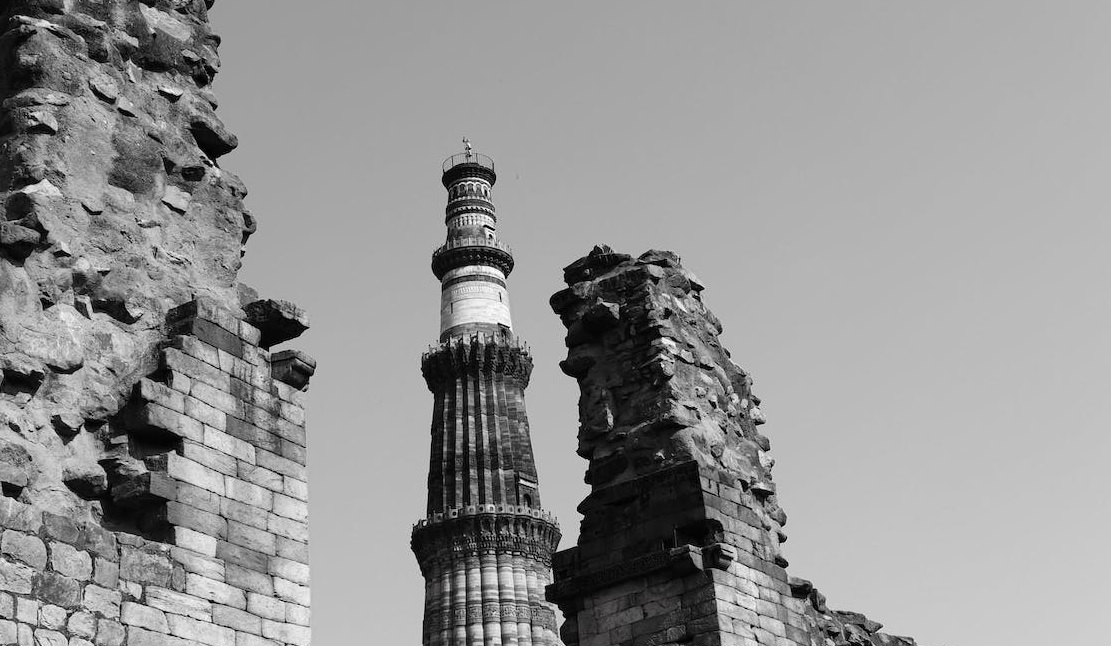The Qutub Minar: A Historical and Architectural Marvel
The Qutub Minar, located in Delhi, India, is one of the most iconic and historically significant landmarks in the country. Standing tall at a height of 73 meters (240 feet), this UNESCO World Heritage Site is not just a towering masterpiece of Indo-Islamic architecture but also a reflection of India’s rich and diverse history. In this essay, we will delve into the history, architecture, cultural significance, and preservation efforts related to the Qutub Minar.
Historical Background
The history of the Qutub Minar can be traced back to the 12th century when it was built during the reign of Qutb-ud-din Aibak, the founder of the Delhi Sultanate. Construction of the minaret commenced in 1192 AD and continued under various rulers over the centuries. It was initially intended to serve as a victory tower to commemorate the Muslim conquest of Delhi and the establishment of Muslim rule in India.
The Qutub Minar is a part of the Qutub Complex, a group of monuments that includes other historical structures like the Quwwat-ul-Islam Mosque, the Alai Darwaza, the Iron Pillar of Delhi, and several other structures and ruins. The complex showcases the architectural evolution in India under different dynasties, from the early Islamic period to the Mughal era.
Architecture and Design
The Qutub Minar is a towering example of Indo-Islamic architecture, characterized by its distinctive features and intricate design. The minaret is constructed primarily of red sandstone, with white marble and other decorative elements used to enhance its beauty. Its design reflects a fusion of Islamic and Indian architectural styles, creating a unique masterpiece that has stood the test of time.
The minaret consists of five stories, each separated by balconies and adorned with intricate carvings and calligraphy. The first three stories are built in the distinct Indo-Islamic style, while the top two stories showcase a more refined Islamic design, introduced during the later phases of construction. The Qutub Minar’s balconies and galleries are supported by elaborately carved brackets, displaying fine craftsmanship.
One of the most remarkable features of the Qutub Minar is the exquisite calligraphy found on its surface. The inscriptions are in Arabic and contain verses from the Quran. These inscriptions not only add to the aesthetic appeal of the minaret but also serve as a historical record of the time it was built and the rulers who contributed to its construction.
Cultural Significance
The Qutub Minar holds immense cultural significance, not only as a symbol of India’s rich architectural heritage but also as a testament to the cultural amalgamation that has occurred over the centuries. It represents the fusion of Islamic and Indian influences in art and architecture.
The minaret is a popular tourist attraction, drawing visitors from all over the world who come to admire its beauty and learn about its historical significance. It is a testament to the enduring legacy of the Delhi Sultanate and the subsequent dynasties that ruled northern India.
The Qutub Complex, of which the Qutub Minar is a part, is also significant from a religious perspective. The Quwwat-ul-Islam Mosque within the complex is believed to be one of the earliest mosques in India. Its construction involved repurposing materials from existing Hindu and Jain temples, reflecting the adaptation and integration of diverse cultural and religious traditions.
Preservation Efforts
Preserving the Qutub Minar and the surrounding monuments is of paramount importance to ensure that future generations can continue to appreciate their historical and architectural significance. Conservation efforts have been ongoing for many years to protect these structures from environmental factors, pollution, and wear and tear caused by tourism.
The Archaeological Survey of India (ASI) has been entrusted with the responsibility of maintaining and conserving the Qutub Complex. They employ a range of techniques, including cleaning, structural repairs, and preventive measures to safeguard the monuments. Regular inspections and maintenance work help in preserving the structural integrity and beauty of the Qutub Minar.
Tourism management is also a crucial aspect of preserving the site. Visitor regulations and guidelines are put in place to ensure that the monuments are not harmed due to excessive footfall or vandalism. Educational programs and guided tours provide visitors with a deeper understanding of the historical and cultural significance of the site, encouraging responsible tourism.
Conclusion
The Qutub Minar stands as a magnificent testament to India’s rich history and architectural prowess. Its towering presence, intricate design, and cultural significance make it a jewel in the crown of Delhi’s historical landmarks. From its inception during the Delhi Sultanate to its present-day status as a UNESCO World Heritage Site, the Qutub Minar continues to inspire awe and admiration among people from all walks of life. Through preservation efforts and responsible tourism, we can ensure that this architectural marvel remains a symbol of India’s cultural heritage for generations to come.

